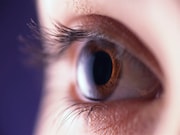Wide variety of related causes and symptoms complicates the dry eye diagnosis
WEDNESDAY, Sept. 12, 2018 (HealthDay News) — Attention to the subtypes of dry eye disease may better equip clinicians to diagnose and treat cases, according to a review article recently published in the New England Journal of Medicine.
Janine A. Clayton, M.D., from the National Institutes of Health in Bethesda, Md., conducted a literature review to describe current knowledge of the causes and treatment of dry eye, ongoing research, and future directions for advancing knowledge and treatment of the condition.
Clayton explains that dry eye has many causes. It can occur with other conditions, as a consequence of environmental triggers, or as a side effect of medications, such as over-the-counter antihistamines. Dry eye can be caused or exacerbated by ocular surgery, computer use, contact-lens use, or low-humidity conditions. Initial diagnosis can be complicated by subjective symptoms, variable presentation, and few objective signs that can be assessed in the primary care setting.
“By thinking in terms of the subtypes of dry eye, classified on the basis of risk factors and pathophysiological features, clinicians will be better equipped to diagnose and treat cases,” Clayton writes.
Copyright © 2018 HealthDay. All rights reserved.








